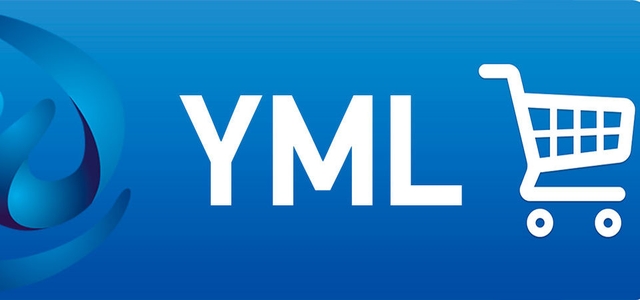
YML (Yandex Market Language) is a specialized format for transmitting product data in an XML structure. It is used for uploading the inventory of online stores to marketplaces, aggregators, and advertising systems.
Originally developed for Yandex.Market, this format has become the standard for many Russian online platforms.
Why did YML become the industry standard?
In short – was there an alternative?
There were several reasons for YML's popularity.
First, the format was developed by Yandex to support the largest advertising tool for online stores at that time – Yandex.Market. If a store wanted to buy traffic and leads, it had to learn to support YML for exporting its products.
Second, YML turned out to be quite simple. If you open the file in a text editor, even an untrained person can read and understand it.
The combination of these two factors led store owners to not consider creating a new format. Why? Because everyone had already learned to work with YML.
Years passed. Yandex.Market is no longer what it once was. YML is no longer sufficient for transmitting a modern set of product information. But changing it is extremely difficult because there is no worthy alternative. And, again, the common question from any business: "Why change something that already works?"
Main Problems with YML
Despite its popularity, the YML format has a number of drawbacks.
Its structure is quite limited and does not always allow for transmitting complex product data, such as composite items, personalized offers, or specific parameters for different categories.
Stores with large assortments face the issue of large data volumes because big YML feeds become cumbersome and difficult to process. This is also why it is not suitable for rapid exchange of minimal product data, for example, when frequently updating prices for a large inventory (this task is now addressed by delta-feeds).
Reading large YML feeds places a load on servers (especially if the CMS doesn’t support streaming data reading). This leads to delays and, consequently, failures in updating prices in market systems.
Additionally, the format does not include built-in mechanisms for managing different workflows, such as dynamic discounts or complex delivery options.
There is also a lack of development for the format from its creators. New fields of data are not added (standardization), there is no minimal list of data sets, and there’s no indication that anything will be fixed.
An added challenge is that YML transmits product content in an unstructured manner, which makes its correct processing difficult.
As a result, companies are forced to develop various workarounds to adapt supplier data to their systems. This leads to the need for manual adjustments, creating intermediate converters, and implementing additional tools for normalizing and standardizing product data.
The creators of the NotPIM project have been working in the e-commerce market for many years and are well aware of all these issues. The inability of the YML format to meet the market’s needs, combined with the numerous hodgepodge of solutions aimed at improving data exchange, prompted us to create the NotPIM service. In particular, our Converter is designed to help you convert YML and other product content formats into the one you need.
How do businesses adapt to YML's problems?
To overcome the format's limitations, companies use various approaches.
Large online stores create several YML files, breaking down the assortment into categories or brands to simplify data processing.
Some companies use the API of marketplaces to transfer operational data, such as stock levels or prices, bypassing YML's limitations.
In some cases, stores add custom fields to YML, which are then processed by the other party, allowing partial adaptation of the format to their needs.
We recommend forgetting about all the issues with the format, as the NotPIM Converter can convert data between numerous different formats. Choose the format that fits your system and don’t worry about which format your partners work with.
Why hasn't another universal format appeared?
Despite the obvious problems, no single standard has emerged on the market that could replace YML.
The main reason is that most players have already gotten used to this format, and transitioning to a new one would require significant effort and investment.
Moreover, each platform has its own requirements for data transmission, making it difficult to create a universal solution.
Marketplaces are gradually transitioning to APIs, reducing reliance on feeds, but completely abandoning them is still not possible.
And we must not forget the meaning of the phrase "data transmission standard." After all, these “data” are very different. For some, it’s millions of product matrices; for others, it’s micro-feeds with very high update frequency; for third parties, it’s large arrays of product characteristics and descriptions.
Thus, in an ideal world, each task would require its own format. But which business would agree to support such a zoo of formats?
That’s how things stand.
Conclusion
The YML format remains a key tool for transmitting product data despite its limitations.
Companies continue to search for adaptation methods, while marketplaces are implementing new methods of working with content.
However, a fully universal solution has not yet emerged, and in the near future, the market will likely continue to use YML as the main standard.